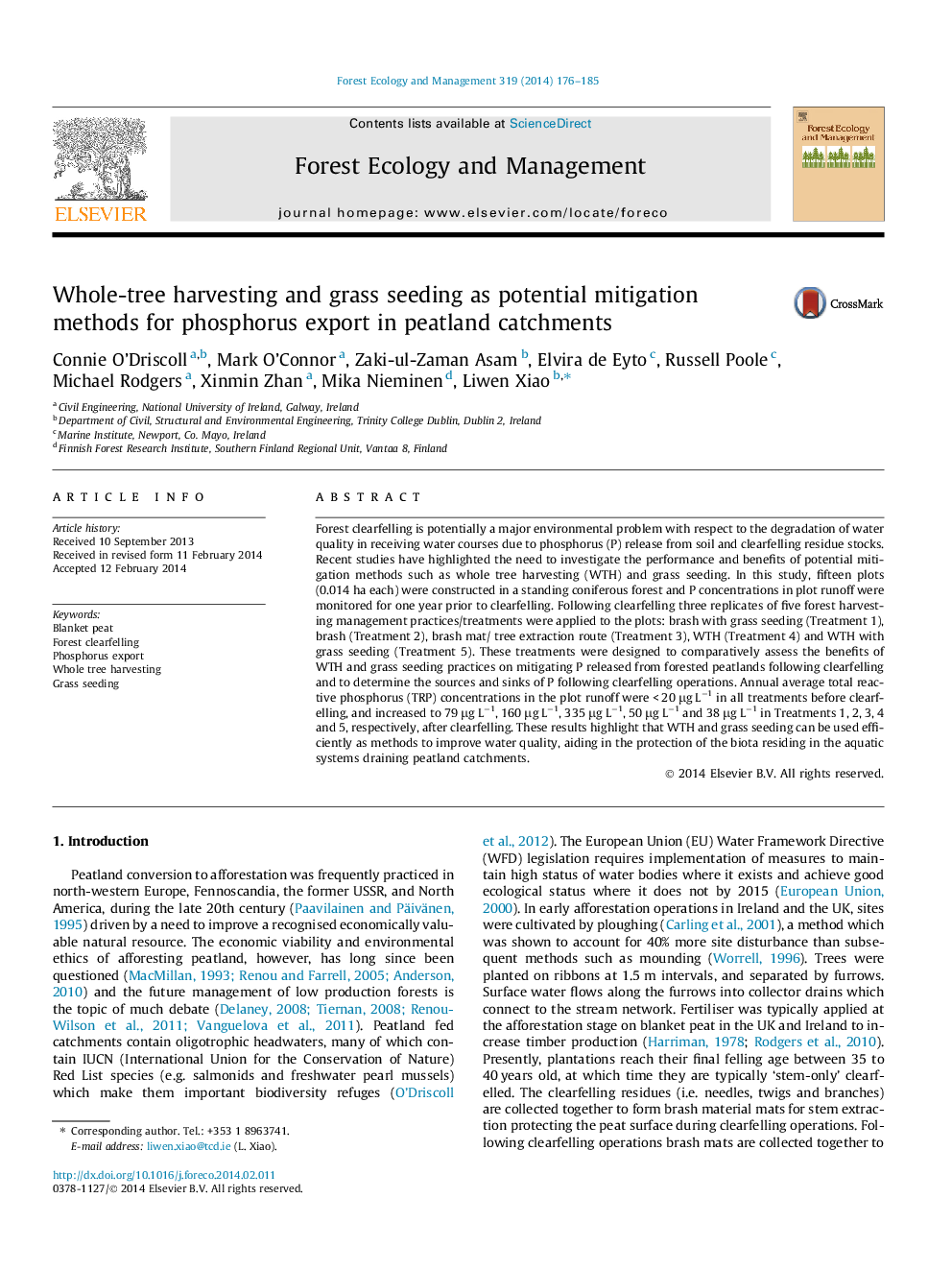| کد مقاله | کد نشریه | سال انتشار | مقاله انگلیسی | نسخه تمام متن |
|---|---|---|---|---|
| 86664 | 159202 | 2014 | 10 صفحه PDF | دانلود رایگان |
• We employed a plot-scale study to examine peatland forestry practices on P release.
• Brash windrows were the main P source.
• Brash mats used for timber extraction contributed only slightly more to p release than brash windrows alone.
• The humus layer can act as both a P source and sink.
• Grass was a significant P sink.
Forest clearfelling is potentially a major environmental problem with respect to the degradation of water quality in receiving water courses due to phosphorus (P) release from soil and clearfelling residue stocks. Recent studies have highlighted the need to investigate the performance and benefits of potential mitigation methods such as whole tree harvesting (WTH) and grass seeding. In this study, fifteen plots (0.014 ha each) were constructed in a standing coniferous forest and P concentrations in plot runoff were monitored for one year prior to clearfelling. Following clearfelling three replicates of five forest harvesting management practices/treatments were applied to the plots: brash with grass seeding (Treatment 1), brash (Treatment 2), brash mat/ tree extraction route (Treatment 3), WTH (Treatment 4) and WTH with grass seeding (Treatment 5). These treatments were designed to comparatively assess the benefits of WTH and grass seeding practices on mitigating P released from forested peatlands following clearfelling and to determine the sources and sinks of P following clearfelling operations. Annual average total reactive phosphorus (TRP) concentrations in the plot runoff were < 20 μg L−1 in all treatments before clearfelling, and increased to 79 μg L−1, 160 μg L−1, 335 μg L−1, 50 μg L−1 and 38 μg L−1 in Treatments 1, 2, 3, 4 and 5, respectively, after clearfelling. These results highlight that WTH and grass seeding can be used efficiently as methods to improve water quality, aiding in the protection of the biota residing in the aquatic systems draining peatland catchments.
Journal: Forest Ecology and Management - Volume 319, 1 May 2014, Pages 176–185
